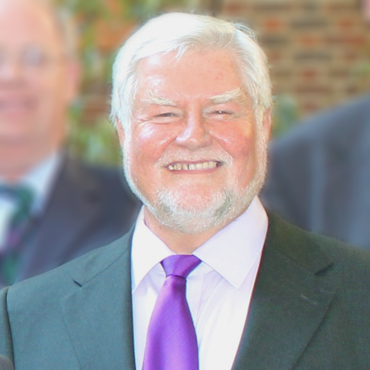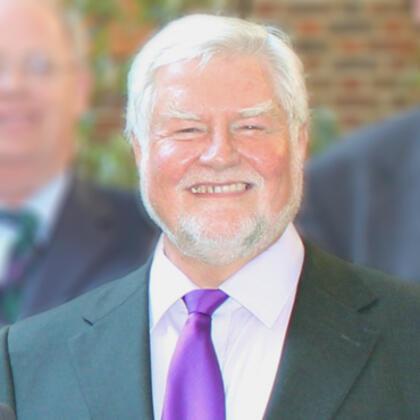The Psychology of Money
Share
- Details
- Text
- Audio
- Downloads
- Extra Reading
It has been claimed that economics is just a branch of psychology. Certainly movements on the stock market reflect human greed and fears. The desire to acquire wealth is a major driving force in human behaviour and our relationship with money says much about who we are. If money doesn't necessarily make us happy it does powerfully affect our emotions and is a factor in many psychological disorders ranging from anxiety and depression to hoarding and kleptomania.
This is a part of Glenn Wilson's series of lectures as Visiting Professor of Psychology, 2012/13. The other lectures are as follows:
Personality and the Brain
Genuis of Madness?
Mind over Matter
Sleep and Dreams
How to be a lie detector
Download Text
19 March 2013
The Psychology of Money
Professor Glenn Wilson
Economics may be considered a branch of psychology since it usually boils down to the motives and behaviour of individuals. Sir Thomas Gresham was an early contributor to behavioural economics with his explanation to Queen Elizabeth I as to why the realm was depleted in silver. “Good money drives out bad”, he maintained. Henry VIII had “cut” the silver coins with 40% base metals in order to fund his wars. Since both old and new coins remained in circulation, people tended to spend the debased money and keep the “good” money for themselves, or else transfer it out of the country.
Share movements are marked by the tendency to jump on and off bandwagons (a kind of social contagion or herding instinct). The typical stock market bubble (e.g., tulips, the South Seas and dot.coms) begins with professional investors identifying a promising company that seems undervalued. The “smart money invests when the price is low, causing it to rise. Media attention generates enthusiasm among the wider public, which grows into greed-driven mania, sometimes delusional in proportion, as the price of the stock spirals upwards. Then a tipping point is reached (perhaps triggered by institutional selling according to computerised criteria) and the value of shares begins to fall. At this stage, enthusiasm is replaced by the emotion of fear among private investors. They bail out simultaneously to complete the “bear market” before there is a return to the original trend-line (Rodrigue, 2006). During the entire boom-bust sequence the valuation of the shares is determined less by the economic strength of the company than the emotions of the investors (greed, euphoria, fear and panic).
People behave irrationally with respect to money (Ariely, 2008). Having made an investment decision they selectively seek information that confirms that it was the correct one, thus avoiding the discomfort of cognitive dissonance. Knox & Inkster (1968) showed that people at a race track who had already placed a bet rated their horse’s chances of winning higher than people about to place a similar bet.
An optimistic bias operates within commerce (Kahneman, 2011). This generates wishful thinking, including the illusion of control (the belief we are in control of our destiny, not the playthings of luck) and the planning fallacy (tendency to underestimate the completion time and costs of a project and overestimate its benefits). Even though it may be irrational, optimism is good for individuals (optimists are more resilient, have stronger immune systems and live longer) and probably also society (helping to drive capitalism).
The sunk cost effect is a tendency to “throw good money after bad”, persisting with a project that has been started rather than admitting it is untenable (e.g., Concorde). This form of irrationality is more apparent in adult humans than young children or non-human animals. It may be a dissonance avoidance strategy or it could be due to humans’ overgeneralising of the “waste not” rule (Arkes & Ayton, 1999).
The perception of money is easily distorted by its value. Bruner & Goodman (1947) found that poor children saw coins as larger than rich people (presumably because they viewed them as more valuable). This study has not been reliably replicated but it triggered many others on the estimation of money size. Furnham (1983) found that British people remembered the old pound note as bigger than the present one, presumably because inflation has reduced its value over the years. Molz (2007) found that German people saw their own Euro as bigger than those of other countries, especially that of Portugal, a country that is both small and struggling economically.
High inflation makes people insecure about the value of their money. Countries that redenominate are usually in economic difficulty (e.g., Zimbabwe). The Euro-illusion refers to that fact that countries that changed their own currency to the Euro generally think that this fuelled inflation because it was hidden in the changeover (Gamble, 2007).It is higher for countries where the exchange rate was extreme (e.g., Italy as opposed to Ireland). Ease of conversion is also important; charitable donations increased 11% in the Netherlands in 2004, apparently because the 2.2 exchange was thought of as dividing by 2. Tourists in countries where the exchange rate is a multiple of their own currency (e.g. 3$SP = 1£UK) tend to underspend relative to those where it is a fraction (.33). (Raghubir & Srivastava, 2002).
Money is more than just a means to an end. It prompts behaviour that cannot be explained by its utilitarian value. People rolling in money still seek more of it, as though they can never get enough. They will sacrifice other values such as family and friends in favour of accumulating money. They chase money for the sake of money or perhaps to keep ahead of the Joneses.
Money evokes conditioned emotional responses. We become attached to its form and resist changes in notes and coins. People become obsessive about money – it gives them a buzz like an addiction (Lea & Webley, 2008). It has commonalities with food, which might suggest an evolutionary origin for our craving. When hunger is aroused by delicious aromas people become fiscally tighter (Briers et al, 2006).
The mere thought of money seems to make us mean. Reminders of great wealth (e.g., a money-themed screensaver in the background) seem increase feelings of social detachment (Vohs et al 2008). Money-primed subjects seek greater space from other people, in the manner of an animal that has acquired a kill and wants to protect it from competitors. This may underlie the stereotype of the wealthy miser (e.g., Scrooge).
Many animals (esp. rodents and birds) cache food for times when it may be scarce. Bouissac (2006) has suggested that this is the basis human hoarding, especially when it is solitary rather than social. However, it may be more equivalent to saving, where money is accumulated to be used for later purposes, such as taking a holiday or buying a house. Accumulating money just to allay anxiety, with no intention ever to spend it, is a form of obsessional-compulsive disorder. Psychoanalysts have suggested that “parsimony” may be due to overly strict toilet-training in childhood but there is no persuasive evidence to support such an idea (Eysenck & Wilson, 1973).
Factor analysis of questionnaires has identified various attitudes with respect to money and their personality correlates. For example, people who value money for the power and prestige that is brings tend to be Machiavellian in personality, those who are future and security oriented are more likely to be anxious types and those who are concerned with retention of money (hoarding) tend to be obsessional in personality (Yamauchi & Templer, 1982). People high on “Work ethic” are inclined to be obsessed with money and to believe that it can be gained by effort and ability (Furnham, 1984). Income relates negatively to frugality and anxiety and positively with forward planning and saving (Baker & Hagedorn, 2008) though the directions of cause and effect are unclear.
The value of a monetary reward diminishes exponentially with the delay in its delivery (Green & Myerson, 2004). This is called delay discounting and it is one reason that immediate lump-sum pension payments are set at less than long-term payments. Generally, poorer people discount more than wealthy, perhaps because they are not in a position to put anything aside.
DD is a good measure of impulsiveness as a personality trait, impulsive and extravert individuals placing more of premium on immediate gratification. Not surprisingly, drug addicts, alcohol abusers and smokers show steeper DD functions than their non-addicted counterparts (Reynolds et al, 2004). Even the children of smoking mothers display more DD than children of non-smokers, implying a genetic connection.
Compulsive shopping is an impulse-control disorder related to depression and OCD which can result in problems of debt. It is disproportionately female (80%). The most common target items are clothing, shoes and jewellery for women and electronics for men. Shopping is a mood-enhancing experience, relief being felt when a purchase in made (Black, 2007). It relates to low self-esteem and depression and is heightened during the PMS phase of the female cycle. Once a problem is acknowledged, treatment with SSRI antidepressants or CBT may be effective.
The availability of credit cards contributes to shopaholism (Lo & Harvey, 2011). Credit cards are more likely to be used and luxury goods purchased when self-esteem is threatened. Pettit & Sivanathan (2010) gave feedback on task performance that was either ego-enhancing or damaging to subjects’ self-worth. The latter led to a 30% greater likelihood of choosing expensive designer jeans than ordinary ones and 60% increased likelihood of using a credit card for the purchase. This might account for some of overspending difficulties that people of low socioeconomic status get themselves into.
Trade was originally conducted with commodities like cattle and wheat. This gave way to precious metals like gold and silver, which were later cast as coins that served as units of money. Next came notes promising a certain amount of precious metal (e.g., a pound of silver), which could be passed around as currency without redemption ever being called upon. More recently we have added handwritten cheques, credit cards and cashless transactions such as web transfers and mobile phone payments. Khan & Craig-Lees (2009) argue that the further we get away from awareness of the real value of the commodities being traded the more people spend extravagantly, run up debts and create inflation. This trend towards a cashless society may well have contributed to the recent economic collapse.
Kleptomania is similar to compulsive shopping but features an impulse to steal things rather than purchase them (shop-lifting or taking money). Again, the act of stealing is accompanied by a sense of relief, though the goods or money taken may not really be needed (c.f., Winona Ryder). Kleptomania is associated with mood, eating and addictive disorders and is also more common in females (about 3X) and also varies with cycle phase (Talih, 2011).
It is a well-established principle that where money is concerned we prefer avoiding losses to making gains. Put another way, the pain of losing things is usually greater than the pleasure of acquiring them (Kahneman & Tversky, 1979). This is referred to as loss aversion and it is held to account for many other investment phenomena.
The framing of a commercial communication has an important influence on the decision-making of consumers. Messages worded in terms of what might be lost as opposed to what might be retained are more persuasive in prompting people to gamble, even when expected outcomes are identical (De Martino, et al, 2009). People are also happier to undergo an operation with a 90% “survival” than 10% “mortality”. fMRI recordings show that loss frames activate the amygdala (a fear centre in the brain) more than gain frames.
The impact of framing has been demonstrated in a real-life consumer situation by Ganzach & Karsahi (1995). Bank customers whose credit cards were lying fallow were sent letters that either explained the benefits of using the card or pointed out what they might miss out on if they did not. Those who received the loss-framed message were twice as likely to start using the card as those sent the gain-framed letter.
Another kind of framing is called mental accounting (Thaler, 1999). People code their transactions into compartments that reduce the economic logic of their decisions. If they have bought a theatre ticket that cost £10 and lose it on the way, only 43% will buy another ticket to see the show. However, if they had not bought a ticket in advance and lost £10 on the way, 88% will buy the ticket. The two situations are equivalent so why the difference? Apparently people are reluctant to pay for two tickets because it makes the show seem too expensive, whereas the lost £10 is not “accounted” against the theatre ticket. Such categorical thinking is responsible for many irrational decisions.
The endowment effect refers to our tendency to overvalue things we own compared with similar items that we don’t own. The result is a buy/sell price discrepancy that makes negotiation difficult and which fuels inflation. House owners typically value their property around 12% higher than its true market value and car owners are readily insulted by the trade-in value they are offered. Since selling something that is owned arouses fears of forgoing it, the endowment effect may be an example of loss aversion. Indeed, it is associated with activation of the insula, a part of the brain that has previously been linked to disgust, pain and fear of monetary loss (Knutsen et al, 2008).
There are other possible explanations, however. Ownership adds sentimental value, particularly when we have had something for a long time, which makes it hard to “let go” (Morewedge et al, 2009). The endowment effect may also be explained as a discount for the costs and risks of the transaction (e.g., allowance for the possibility of cheating or defection on the part of the other party).
Does money make people happy? It does up to a point (around £50,000 per year) after which there are diminishing returns and the extremely wealthy are no more happy than the comfortably well-off (Kahneman & Deaton, 2010). Rich nations are generally happier than poor ones but the relationship is far from perfect; other factors like political stability, freedom and security also play a part. The money-happiness connection seems to be stronger for people paid hourly than those on a salary (DeVoe et al, 2009). This is presumably because salaried people can more easily compensate with career satisfaction.
Money seems to impair the ability to enjoy the simple things in life, which rather offsets the happiness that wealth brings. Wealthier people report less “savouring ability” and experimental subjects exposed to reminders great wealth (e.g. a picture of money) are less able to enjoy a piece of chocolate that is given to them to eat (Quoidbach et al, 2010).
Money can also impair people’s satisfaction in their play and humanitarian works. When someone has done something out of the goodness of their heart (e.g., preparing your favourite meal or rescuing you from drowning) they are insulted by offers of payment. Cognitive dissonance experiments show that paying people derisory amounts of money for their work results in them enjoying it less (and doing it less well) than people doing it gratis. The capacity for monetary reward to undermine a person’s intrinsic pleasure in work performance has been demonstrated neurologically (Murayama et al, 2010).
The most effective way to derive happiness from money is to give it away (Dunn et al, 2008). This ranges from small gifts to close family and friends to major organisations contributing to the wider society. The “warm glow” that comes out of voluntary donations to charity, as against involuntary payments (“taxation”) has also been demonstrated in brain responses within the dopamine reward system (Harbaugh et al, 2007). Andrew Carnegie, Bill Gates and Mark Zuckerberg are among the extremely wealthy businessmen who have recognised that philanthropy is more satisfying than hoarding. Misers are indeed miserable.
There may be exceptions: American comedian Jackie Mason said: “Money is not the most important thing in the world, love is. Fortunately, I love money”.
References
Ariely, D. (2008) Predictably Irrational: The Hidden Forces that Shape our Decisions. NY: Harper-Collins.
Arkes, H.R. & Ayton, P. (1999) The sunk cost and Concorde effects: Are humans less rational than lower animals? Psychological Bulletin, 125, 591-600.
Baker, P.M & Hagedorn, R.B. (2008) Attitudes to money in a random sample of adults: Factor analysis of the MAS and MBBS scales and correlations with demographic variables. The Journal of Socio-Economics, 37, 1803-1814.
Black, D.W. (2007) A review of compulsive buying disorder. World Psychiatry, 6, 14-18.
Bouissac, P. (2006) Hoarding behaviour: A better evolutionary account of money psychology. Behavioural and Brain Sciences, 29, 181.
Briers, B. et al (2006) Hungry for money: the desire for caloric resources increases the desire for financial resources and vice versa. Psychological Science, 17, 936-943.
Bruner, J.S. & Goodman, C.C. (1947) Value and need as organising factors in perception. Journal of Abnormal and Social Psychology, 42, 33-44.
De Martino, B. et al (2009) Frames, biases and rational decision-making in the human brain. Science, 313, 684-687.
DeVoe, S.E. et al (2009) When is happiness about how much you earn? The effect of hourly payment on the money-happiness connection. Personality and Social Psychology Bulletin, 35
Dunn, E.W. et al (2008) Spending money on others promotes happiness. Science, 319, 1687-1688.
Eysenck, H.J. & Wilson, G.D. (1973) The Experimental Study of Freudian Theories. London, Methuen.
Furnham, A. (1983) Inflation and the estimated sizes of notes. Journal of Economic Psychology, 4, 349-352.
Furnham, A. (1984) many sides of the coin: The psychology of money usage. Personality and Individual Differences, 5, 501-509.
Gamble, A. (2007) The “Euro illusion”: Illusion or fact? Journal of Consumer Policy, 30, 323-336.
Ganzach, Y. & Karsahi, N. (1995) Message framing and buying behaviour: A field experiment. Journal of Business Research, 32, 11-17.
Green, L. & Myerson, J. (2004) A discounting framework for choice with delayed and probabilistic rewards. Psychological Bulletin, 130, 769-792.
Harbaugh, W. et al (2007) Neural responses to taxation and voluntary giving reveal motives for charitable donations. Science, 316, 1622-1625.
Kahneman, D. (2011) Thinking, Fast and Slow. NY: Macmillan.
Kahneman, D. & Deaton, A. (2010) High income improves evaluation of life but not emotional well-being. PNAS, 21, 16489-16493.
Kahneman, D. & Tversky, A. (1979) Prospect theory: An analysis of decision under risk. Econometrica, 47, 263-291.
Khan, J. & Craig-Lees, M. (2009) Cashless transactions: Perceptions of money in mobile payments. International Business and Economics Review. Vol. 1, No.1 (online).
Knox, R.E. & Inkster, J.A. (1968) Post-decision dissonance at post time. Journal of Personality and Social Psychology, 8, 319-323.
Knutsen, B. et al (2008) Neural antecedents of the endowment effect. Neuron, 58, 814-822.
Lea, S. & Webley, P. (2006) Money as tool, money as drug. The biological psychology of a strong incentive. Behavioural and Brain Sciences, 29, 161-209.
Lo, H. & Harvey, n. (2011) Shopping without pain: Compulsive buying and the effects of credit card use in Europe and the Far East. Journal of Economic Psychology, 32, 79-92.
Molz, G. (2007) Biased judgements of Euro coins’ sizes: Stimuli-specific and interindividual suggestive effects. European Journal of Psychology, 3,
Morewedge, C.K. et al (2009) Bad riddance or good rubbish? Ownership and not loss aversion causes the endowment effect. Journal of Experimental Social Psychology, 45, 947-951.
Murayama, K. et al (2010) Neural basis of the undermining effect of monetary reward on intrinsic motivation. PNAS, 107, 20911-20916.
Pettit, N.C. & Sivanathan, N. (2010) The plastic trap: Self-threat drives credit card use and status consumption. Social Psychological and Personality Science, 2 (online).
Quoidbach, J. et al (2010) Money giveth, money taketh away: The dual effect of wealth on happiness. Psychological Science, 21, 759-763.
Raghubir, P. & Srivastava, J. (2002) Effect of face value on product valuation in foreign countries. Journal of Consumer Research, 29, 335-347.
Reynolds, B. et al (2004) Delay discounting and probability discounting as related to cigarette smoking status in adults. Behavioural Processes, 65, 35-42.
Rodrigue, J. (2006) Bubbles, manias and bears. JR Blog entry 1/18/06 (Dept of Global Studies and Geography, Hofstra Univ., NY).
Talih, F.R. (2011) Kleptomania and potential exacerbating factors. Innovations in Clinical Neuroscience, 8, 35-39.
Thaler, R.H. (1999) mental accounting matters. Journal of Behavioural Decision Making, 12, 183-206.
Vohs, K. et al (2008) Merely activating the concept of money changes personal and interpersonal behaviour. Current Directions in Psychological Science, 17,208-212.
Yamauchi, K.T. & Templer, D.I. (1982) The development of a money attitudes scale. Journal of Personality Assessment, 46, 522-530.
© Professor Glenn D Wilson 2013
This event was on Tue, 19 Mar 2013
Support Gresham
Gresham College has offered an outstanding education to the public free of charge for over 400 years. Today, Gresham College plays an important role in fostering a love of learning and a greater understanding of ourselves and the world around us. Your donation will help to widen our reach and to broaden our audience, allowing more people to benefit from a high-quality education from some of the brightest minds.


 Login
Login







